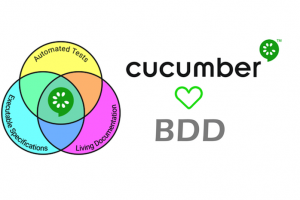
What is Black Box Testing?
Black box testing is software QA testing technique in which the implementation of the product is tested without knowing its internal structure. It is also known as behavioral testing.
Black-box testing is a functional and non-functional test without getting access to the system component’s internal structure.
This test design is based on the black box methodology-the method for writing or selecting test cases based on evaluating a part or system’s functional or non-functional specification without understanding its internal structure.
It places focus on the output generated by the item without consideration on how it is derived. The knowledge of a programming language is not necessary to use this testing method. It is mainly used for high levels of testing. It takes lesser time to carry out, as there is no need to look into the code structure of the software developed.
What is the Black Box?
The software is checked for the tester is like a black, opaque box, whose contents he does not see. This technique is intended to search for errors in the following categories:
- Improperly implemented or incomplete functions
- Behavioral errors or insufficient system performance
- Design errors
- Errors in data structures or arrangement of access to external databases
They ought to reflect on what the system does and not how it does it.
Black Box Testing Example
The software tester tests the functionality of the application such as the web pages of a website using a browser. The tester does not require knowledge of the internal code implementation and verifies the outcome of the expected outcomes.
The tester checks the website, not understanding the features of its implementation, using only the developer’s given input fields and buttons. The specification is at the source of the anticipated performance.
Since this is a kind of testing, it can involve certain forms of testing by definition. This can be both functional and non-functional to check the black box. Functional testing includes checking the functionality of system components, and non-functional testing of our program’s general features, respectively.
The black box methodology is valid at all test levels for which a specification exists (from universal to acceptable). For example, the specifications or a functional specification would be the basis for writing test cases while conducting system or integration testing.
Black Box Testing Techniques
Equivalence Partitioning
This is a software testing method that entails partitioning the input values of a program into classes of data. The test cases are then derived from these divided classes.
This strategy involves dividing input values into correct and erroneous sections and choosing representative values as test data from each section. It can be used to cut down on the number of test cases. Suppose we have an integer variable N in the range of -99 and 99: the positive equivalence groups are [-99, -10], [-9, -1], 0, [1, 9], [10, 99], and invalid (negative)-< -99, > 99, null, non-numeric.
Boundary Value Analysis
This is a black box testing technique in which the extreme boundaries for input values are chosen. A certain range of input values is then made into the boundaries to determine if they are acceptable by the system or not.
This technique involves determining the limits of input values and choosing the values at the boundaries, within and outside the boundaries, as test results. Many systems continue to act inappropriately at limit values, so it is very important to determine application boundary values. We take the following values when checking: minimum, (minimum-1), average, (average + 1), and normal. In this case, for example, -99 < = N<=99 set is used: -100, -99, -98, -10, -9, -1, 0, 1, 9, 10, 98, 99, 100.
Decision Tables
Test scenarios are chosen using this methodology based on correct and incorrect transitions to the state. Suppose we decide to make a doctor’s appointment and schedule the time for our appointment: we go through the form, decide the time that’s convenient for us and press the “Sign up” button. Immediately after that, the time chosen by us is inaccessible to another record, as the first record has led to a database update.
Error Guessing:
This method does not require a tool as it involves making a guess by an experienced tester where the fault lies in the program.
Where is Black Box Testing used?
Functional Testing:
The testing is done to ascertain the functional requirements of a system. Using this approach, the tester tests, according to the documentation, whether the program fulfills all of the client’s specified functions and specifications as a whole.
Non-Functional Testing:
This method is used in determining the Non-functional requirements of software such as scalability, usability, and performance.
Regression Testing:
This is done over the entire development process. Such testing aims at checking the operability of the new code and finding out if it has contributed to errors or breakdowns in the old functionality. Regression Testing is usually performed after an update has been done to software. It is used to determine if the existing code is affected by the new code.
Integration Testing:
Testing, in which components of software and hardware are integrated and evaluated to determine the interaction between them. Using the “black box” approach, the tester examines whether all components as a whole work correctly when incorporated into a large system. Nonetheless, each component’s regular operation individually is not a guarantee that they can operate together within the entire project system.
For example, the data could not be transmitted via the interface, or according to the documentation, the interface may not work. Testers depend on the specification when preparing such tests.
Stress Testing:
Suppose we have an online bookmaker, for which the probability of simultaneous registration of 1000 users is indicated in the documentation. In this scenario, a continuous stream of automatic registrations (at least 1000 registrations per minute) for 12 hours would be stress tests.
Usability Testing:
Let the mentioned betting shop have the “Coupon” functionality: we check how much time it takes for the user to add a bet to the coupon, enter the amount and complete the bet.
Let the betting shop have the features of the “Coupon”: we test how long it takes for the user to add a bet to the coupon, enter the sum and complete the bet.
Performance testing:
Through this form of testing, we can check if there are memory leaks, how quickly the system operates and provides feedback, how much traffic our program absorbs, and does not generate an unnecessary amount of links.
Acceptance testing:
After testers have checked the program, it is released to the user, who runs the “black box” acceptance tests based on functionality expectations. In this case, in fact, the set of tests is decided by the consumer himself, though he still has the right to deny acceptance (if he has not been pleased with the test results).
Benefits of Blackbox Testing
- Testing is done from the end-user viewpoint and may help to find inaccuracies and inconsistencies in the specification
- The tester does not need to learn programming languages and to dig into software features
- Testing should be conducted by experts outside of the development team, which helps to prevent bias
- Writing test cases should start as soon as possible;
Disadvantages of Blackbox Testing
- Just tested a very small number of ways of running the program
- Without a clear specification (and this is more definitely a fact for many projects) it is very difficult to make successful test cases
- Certain experiments might be redundant because they have already been done by the developer at the unit test level
Final Thoughts on Black Box Testing
From the information presented, we can draw the following conclusion: the “black box” method is effective for various types of testing; but it should be remembered that some errors cannot be found using only this method (for example, errors in the internal structure of the code)



